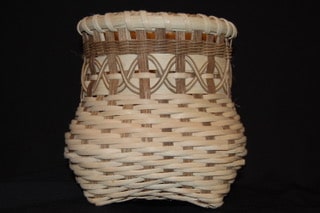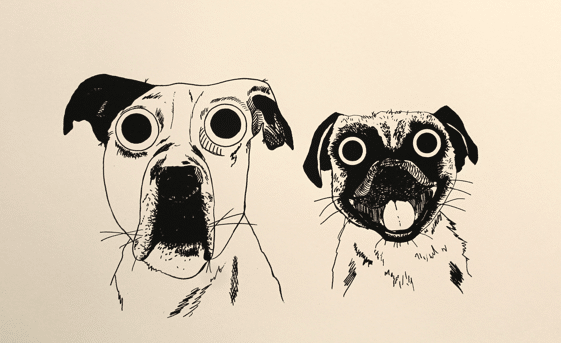Art projects, events and pieces are often the last thing towns think of when it comes to economic development.There is a bit of a tendency for people to think of art as something other people do. If they think of art in their community at all, they think of murals or art exhibits.
Art is far more than just visual! In rural areas our cultural arts are often expressed through music, craft, food, and ways of doing things. These are things all of us do!
I do some work with Legacy Learning Boone River Valley in Webster City, Iowa. We offer workshops that foster appreciation of our environment, our local mixed heritage, and the abundance of local artists and artisans.
 Some examples include
Some examples include
- the Scandinavian threadwork craft of Hardanger,
- Pine Needle Baskets one of the oldest known Native American crafts,
- heritage wood crafts including bowl making, chair caning, and cabin building,
- classic Mexican cooking with our Hispanic community members, and
- our most excellent Laotian community making egg rolls.
Art and culture has to be more than preserving the past.
Arts are very much part of our present day life.
 Legacy Learning also offers pottery classes with a variety of glazing options, several opportunities to explore welding for artistic structures, painting with a variety of media (including local Iowa soil!), copper repousse, and rug making.
Legacy Learning also offers pottery classes with a variety of glazing options, several opportunities to explore welding for artistic structures, painting with a variety of media (including local Iowa soil!), copper repousse, and rug making.

These are useful present day skills. I took the rug making course, and now I’ve made dozens of rugs for friends and family! You can buy a rug – but it’s so fun for me to hunt for special fabrics, create rugs with special people in mind, and people love receiving something made with love!
 We also brought in our first Artist in Residence. Cord McMahon set up a studio in an empty downtown storefront, which showcased his work with ink, paper and fabric. His specialty is animals! The storefront was often full of live animals. Lots of locals commissioned him to draw their own dogs. Not only did this create revenue for a new artist, it brought excitement and new people to town. They spent on gas, food and shopping and experienced the town in a new way.
We also brought in our first Artist in Residence. Cord McMahon set up a studio in an empty downtown storefront, which showcased his work with ink, paper and fabric. His specialty is animals! The storefront was often full of live animals. Lots of locals commissioned him to draw their own dogs. Not only did this create revenue for a new artist, it brought excitement and new people to town. They spent on gas, food and shopping and experienced the town in a new way.
Arts also help us to imagine our future
In 2017 Legacy Learning offered our first workshop on construction rehab skills. Would you think of this as an art? Well, it’s definitely a craft. Webster City is primed for a population infusion as we move toward new nearby processing facilities, and many downtown buildings could be repurposed for living facilities. The “Build a Wall” class taught a few of the necessary skills for rehabbing such areas.
In Akron, Iowa, in a basement, you’ll find the Old Geezers Club. In modern terms, it’s a makerspace. A group of old guys brought their woodworking tools and supplies and are slowly filling up six rooms with them. Their goal is to connect with young people to pass on their skills and make them relevant in the present day. They don’t think this is art at all! But you know what? It sure is. It’s art and creativity and craftsmanship and it matters to their culture.
 Saving the movie theater in Webster City changed how people viewed their future. People’s view of Webster City was negative and full of oh poor me when the main factory closed.
Saving the movie theater in Webster City changed how people viewed their future. People’s view of Webster City was negative and full of oh poor me when the main factory closed.
The closing of the theater was the last straw. Enough! The town rallied to save the theater – the one place everyone could go to. They raised a quarter of a million dollars in one year, mostly in tiny bits from individuals. The theater was saved.
The process of doing all those events really staked a claim on being a town that was NOT dying, one that had a future.
Now what? What other ways could they use this theater for the community? Monday nights are events besides Hollywood movies: the Square movie, Home by Mark Horvath, and local productions too.
https://squareup.com/dreams/webster-city
 Art as healing
Art as healing
Delmont, South Dakota (pop 234), was struck by a tornado in 2015. Several people were injured, and the whole town was evacuated for safety. You could forgive the people of Delmont for despairing for the future of their town.
Clean up and repairs started, and the town slowly made progress on recovering. In the months after, community members were meeting to talk through ongoing recovery efforts.
Kenny Sherin, South Dakota State University Center for Community Vitality, was there for the meetings, and he shared this story with my collaborator. At one of those community meetings, he suggested they consider doing an art project to bring people together and continue the healing process. They liked it and decided on the cardinal, a symbol of death, birth and renewal.
Some people got together and made a template for wooden cardinals. Students in the high school shop class helped cut out over a thousand cardinals. Community groups like the Girl Scouts got together and held cardinal painting parties.
Together, the 234 people of Delmont completed and hung a cardinal in 1,400 trees.
Art helps communities address issues and feelings that are hard to reach with things that are only practical and logical. People in town talked about the spark of color, the symbolism and the sense of community recovery. It’s just as important to defeat the feeling of despair as it is to rebuild the infrastructure.
I encourage you to take a look around you, appreciate the art in the everyday and share the beauty of art in all its forms.
Moments of beauty — be it music, art, nature, or an act of kindness — can take you out of a space of weary familiarity. Beauty, in whatever form it takes, can interrupt a pattern of behavior or a way of thinking and cause us to stop in our tracks and take notice of it. There are people holding out on the toughest frontiers of existence, surrounded by misery, but yet somehow sustained by a moment of beauty.
Michael Freyer, author of The Subversive Power of Beauty
